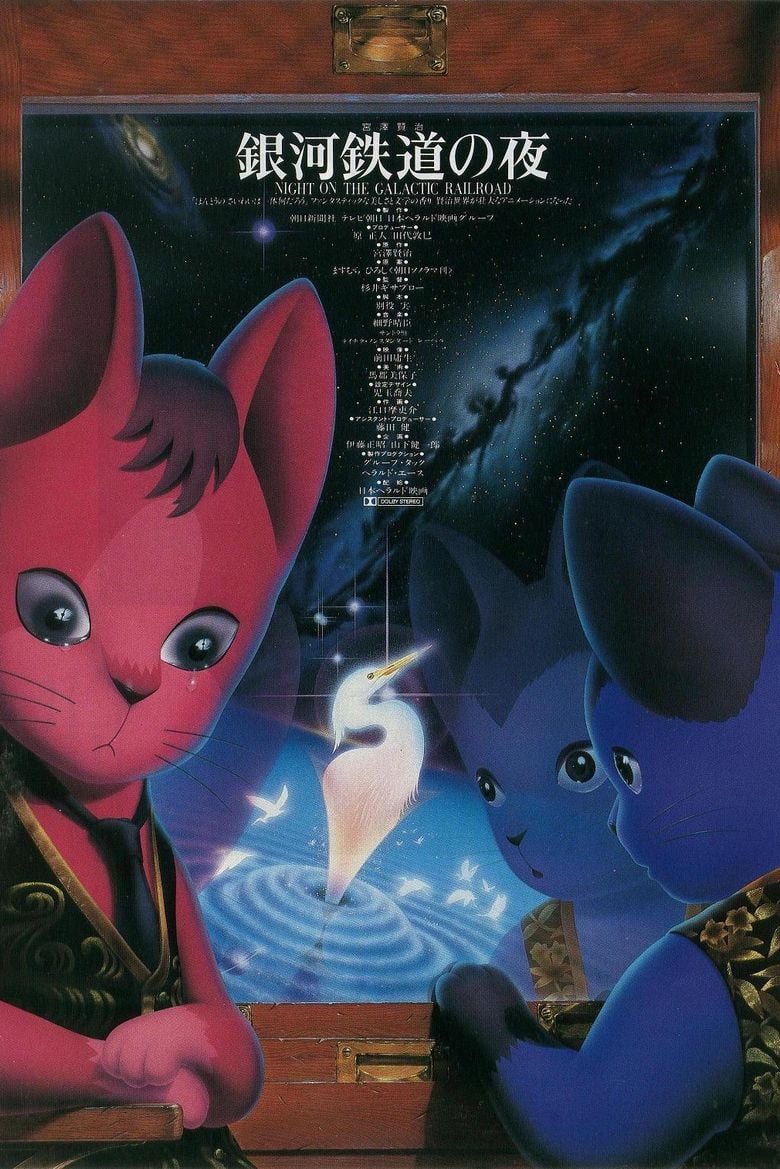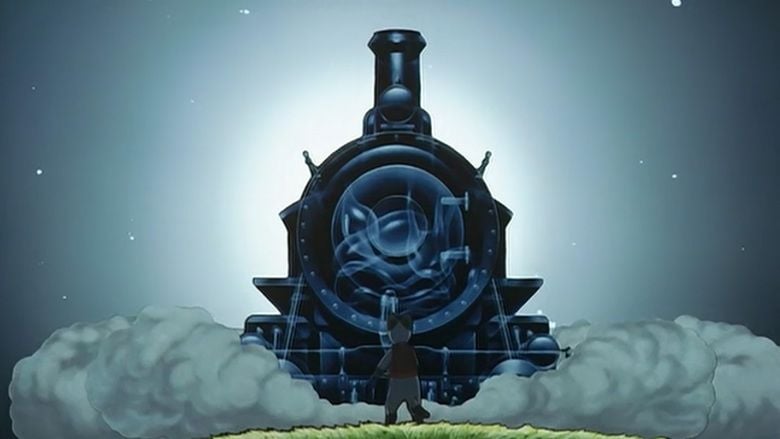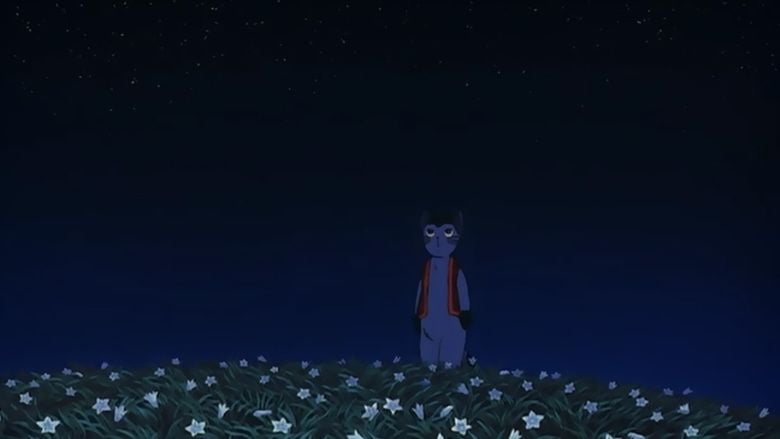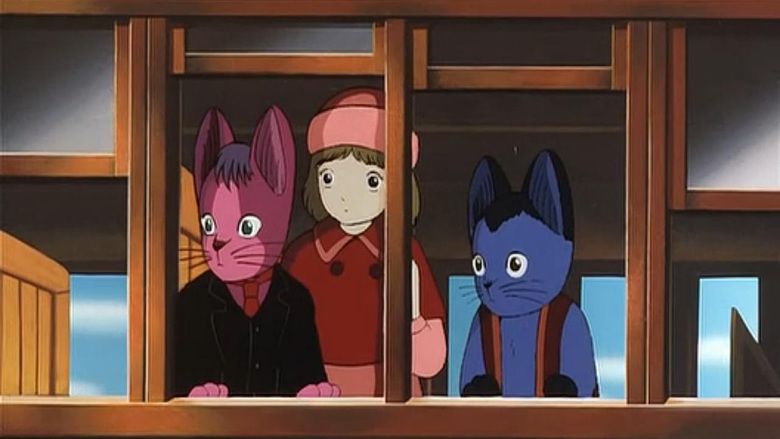Night on the Galactic Railroad
7.4 /10 1 Votes
Language Japanese | 7.2/10 IMDb Country Japan Director Gisaburô Sugii | |||||||||||||||||||||||||||||||||
 | ||||||||||||||||||||||||||||||||||
Trailer for night on the galactic railroad 1985
Night on the Galactic Railroad (銀河鉄道の夜, Ginga Tetsudō no Yoru), sometimes translated as Milky Way Railroad, Night Train to the Stars, or Fantasy Railroad In The Stars, is a classic Japanese fantasy novel by Kenji Miyazawa written around 1927. The nine-chapter novel was posthumously published in 1934 as part of Complete Works of Kenji Miyazawa Vol. 3 (『宮沢賢治全集』第三巻) published by Bunpodō (文圃堂). Four versions are known to be in existence, with the last one being the most famous among Japanese readers.
Contents
- Trailer for night on the galactic railroad 1985
- Night on the galactic railroad trailer
- Plot summary
- Major themes
- Animated film
- Theatrical works
- Illustrated e book
- Allusions in other works
- References

The novel was adapted as an 1985 anime film of the same title, as well as various stage musicals and plays.

Night on the galactic railroad trailer
Plot summary

Giovanni is a boy from a poor family, who works delivering papers to feed his sick mother (who has contracted an unnamed disease). Due to his adult responsibilities, Giovanni never has any free time and is ridiculed by his peers, making him something of a social outcast. His kindly friend, Campanella, is the only one (apart from his teacher, mother and sister, the latter two of whom are never actually seen) who cares for him.

At school one day in science class, the teacher asks Giovanni what the Milky Way really is. Giovanni knows that there are stars, but cannot give a thorough answer. The teacher then asks Campanella, but he intentionally does not answer in order to save Giovanni from even more ridicule from his peers. During class, the local bully, Zanelli, says that Giovanni has been so absent-minded because his father has yet to come back from an expedition to the far north. Zanelli claims that Giovanni's father was arrested because the trip was supposedly "illegal", which angers Giovanni. Before they can come to blows, the bell rings and class ends. After encouraging the students to attend the star festival occurring that night, the teacher dismisses the class. Giovanni, however, stays behind to chat with the teacher.
As the teacher and Giovanni marvel at some of the fossils that Giovanni's father has brought back from his past expeditions, he asks Giovanni if his father has returned yet (this is a question that is asked repeatedly throughout the story). Giovanni responds no, and heads home to begin another long, lonely night of work at the local paper.
On that night, Giovanni runs into Zanelli, who mocks him before and running away to the attend the festival. Giovanni sulks as he accepts that he cannot go to the festival because of his responsibilities at home.
Tired after a hard day's work, Giovanni lies down on top of a hill. He hears a strange sound, and finds himself in the path of a train. Luckily, the train stops and allows him and Campanella to board. Noticing that Campanella is all wet Giovanni asks what happened, and Campanella says he's not sure but a flashback showing him drowning suggests otherwise. The train travels through the Northern Cross and other stars in the Milky Way. Along the way, the two see fantastic sights and meet various people: including scholars excavating a fossil from white sands of crystal and a man who catches herons to make candies from them.
Children who were on a ship that crashed into an iceberg (possibly Titanic) get on the train at Aquila, suggesting that the train is transporting its passengers to the afterlife. The train arrives at the Southern Cross and all the other passengers get off the train, leaving only Giovanni and Campanella in the train. Giovanni promises Campanella they will go on together, forever, but as the train approaches the Coalsack, Campanella disappears, leaving Giovanni behind.
Giovanni awakens alone on top of the hill. He heads to the town, only to discover that Zanelli has fallen into the river from a boat. He was saved by Campanella who went into the water, but Campanella had not yet surfaced and is missing. Worried, Giovanni heads toward the river, in fear of what he already knows. Giovanni's worries prove true, as Campanella's father gives up searching for his son, who he believes to have drowned. On the verge of tears, Giovanni tries to stay strong. Giovanni then makes a promise to himself to stay strong throughout life, claiming that, no matter where he is, he and Campanella will always be together. Campanella's father tells Giovanni that a letter has arrived from his father, announcing he will be returning soon. He then heads home, to deliver this news and some milk to his mother.
Major themes
This story contains a religious question by author Kenji Miyazawa. The main theme of this story is "what is true happiness?"
After Miyazawa's most beloved sister Toshi died in 1922, Miyazawa, in sorrow, went on a railroad trip to Sakhalin. He started working on this novel soon afterward in 1924, and this trip is said to be the basis of the story. He kept on polishing the work steadily until his death in 1933. The middle part of the novel was never completed but was published as it is nevertheless.
A tribute to those who give themselves to others is a recurring theme throughout the storyline, and according to Hasebe (2000), they are reflections of Miyazawa's philosophy of self-sacrifice, a view appearing in many other juvenile novels of his such as Yodaka no Hoshi and Guskō Budori no Denki. Meanwhile, Suzuki (2004) interprets them as representing a "holistic thought of Ecosystem".
Animated film
The story was made into an anime film in 1985 by director Gisaburo Sugii under Minoru Betsuyaku's screenplay and released on July 13, 1985. The anime features Mayumi Tanaka as Giovanni and Chika Sakamoto as Campanella. The film was produced by Nippon Herald and animated by Group TAC.
The most prominent but controversial alteration made in the anime is that the main two characters (and their classmates) are depicted as cats. Some other characters such as the children from the ship are humans.
Many members of the anime staff ultimately went on to high-profile careers as directors or as studio founders, such as Kōichi Mashimo, then a storyboard artist, who more than ten years later would go on to form the famed studio Bee Train.
The film was licensed by Central Park Media in the late 1990s, and was released on VHS with English subtitles. The subtitled version played irregularly on the Canadian station Space in 1997 and 1998. When it was later released on DVD in 2001, CPM produced an English dub that starred Veronica Taylor as Giovanni and Crispin Freeman as Campanella. The film was re-licensed by Discotek Media and released on DVD in 2015 and Blu-ray in 2016.
The captions throughout the film are in Esperanto, paying homage to Kenji Miyazawa who was strongly interested in the language. In the language, the film is called Nokto de la Galaksia Fervojo. Texts appearing in various scenes are also written in Esperanto, such as writings on the blackboard in the classroom. An apparent extra at press in the printing house—where Giovanni works—tells the shipwreck of a passenger ship, carrying the Esperanto lyric of "Nearer, My God, to Thee". The film soundtrack was composed by YMO member Haruomi Hosono.
Justin Sevakis of Anime News Network commented that the film was "a beautiful journey, albeit an ominous one. Slowly, the mood of the trek shifts from excited and childlike to desperate and profound.”
Theatrical works
Playwright Sō Kitamura made the story into a drama titled Sōkō: Night on the Galactic Railroad (想稿・銀河鉄道の夜). Note that 想稿 could be a play on the word sōkō (草稿, "rough draft") and the character 想 (sō) carrying meanings such as "conception" or "idea". Premièred in 1986, the play was performed by Kitamura's theatrical company Project Navi.
A part in a 2002 play consisting of various works by Kenji The Account of Kenji Island Exploration (賢治島探検記, Kenji-tō Tankenki) written by Yutaka Narui for a theatrical company Caramelbox, features the story by the name of Night on the Light Speed Galactic Railroad (光速銀河鉄道の夜, Kōsoku Ginga Tetsudō no Yoru). It follows through the episodes in the novel rather briefly. The play also includes some lines by Professor Burukaniro, which appear only in the first three versions of the novel.
Warabiza, a performing arts company in Akita Prefecture, made a musical version of the story. The musical premièred in April 2004 and toured around Japan until March 2007.
Illustrated e-book
This is an illustrated book with music, launched in 2011 as an application for Apple Inc.'s iPad. Using the final fourth draft of Miyazawa's original as the source text, this version is made up of 272 pages, an unusually large number for a picture book. Apple Japan has recommended the Japanese version as an educational application.
Allusions in other works
References
Night on the Galactic Railroad WikipediaNight on the Galactic Railroad IMDb Night on the Galactic Railroad themoviedb.org
